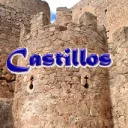• ESTELLA, Estación Ferrocarril, Convento de Santa Clara, Convento de Concepcionistas Recoletas, Iglesia de San Pedro de Lizarra, Basílica de Santa María del Puy, Plaza de los Fueros, Iglesia de San Juan Bautista, Iglesia de San Miguel Arcángel, Iglesia de San Miguel Arcángel, Iglesia del Santo Sepulcro, Palacio de los Reyes de Navarra, Y la Iglesia de San Pedro de la Rúa
 Estella, localidad importante en el Camino de Santiago, el Códice Calixtino la cita con halagos y con un pasado medieval como legado de su historia de primer orden. Tanto en los edificios religiosos como civiles que nos transmiten la importancia que tuvo en el Reino de Navarra
Estella, localidad importante en el Camino de Santiago, el Códice Calixtino la cita con halagos y con un pasado medieval como legado de su historia de primer orden. Tanto en los edificios religiosos como civiles que nos transmiten la importancia que tuvo en el Reino de Navarra
Puedes realizar estas visitas:
- Estación Ferrocarril, edificio Neo-románico.
- Convento de Santa Clara, convento de vida contemplativa desde el S. XIII, fue reconstruido en el S. XVII en estilo barroco.
- Convento de Concepcionistas Recoletas, se construyó entre 1689 y 1731, en estilo barroco.
- Iglesia de San Pedro de Lizarra, su origen es del S. XII, pero ha tenido muchas modificaciones la más importante en el S. XIV en estilo gótico.
- Basílica de Santa María del Puy, templo del S. XX, en lo alto de la ciudad.
- Plaza de los Fueros, es el punto neurálgico de la ciudad.
- Iglesia de San Juan Bautista, se construyo a finales del S. XIII, pero las innumerables reformas apenas han dejado alguna muestra.
- Iglesia de San Miguel Arcángel, templo con muestras de edificación entre 1187 y 1196, y una interesante portada septentrional.
- Iglesia del Santo Sepulcro, fue una de las parroquias más antiguas de la ciudad, de la que consta que ya en 1123 era sede de la cofradía del Santo Sepulcro.
- Iglesia de Santa María Jus del Castillo, Este templo edificado en el S. XII, sobre el solar de una antigua sinagoga.
- Calle de Curtidores, es la rúa con más edificios medievales de la ciudad.
- Palacio de los Reyes de Navarra, excepcional ejemplo del Románico civil.
- Y la Iglesia de San Pedro de la Rúa, este templo construido en los S. XII (finales), XIII, XVII con estilos del románico y gótico, además de un precioso e interesante claustro.
Puedes descargarte el PDF con información, planos, fotos y contactos.
Pulsar sobre la imagen con el botón derecho y guardar como…para descargar y llevar el archivo PDF en tu tablet o Smartphone toda la información. Y si deseas conocer las nuevas publicaciones solo tienes incluirte en seguir para recibirlas por correo electrónico.
-
ESTELLA
Estella, important in the Camino de Santiago town, Codex Calixtino appointment with praise and medieval past as a legacy of its history first order. Both religious and civil buildings that echo the importance it had in the Kingdom of Navarre
You can make these visits:
- Railway Station, Neo-Romanesque building.
- Convent of Santa Clara convent of contemplative life from the thirteenth century, it was rebuilt in the seventeenth century in baroque style.
- Recollect Convent of Conception, was built between 1689 and 1731, in baroque style.
- Church of San Pedro de Lizarra, its origin is from the twelfth century, but has had many the most important changes in the fourteenth century in Gothic style.
- Basilica of Santa Maria del Puy, Temple S. XX, on top of the city.
- Jurisdictions Square is the hub of the city.
- Church of San Juan Bautista, it was built in the late thirteenth century, but the numerous reforms have left hardly any shows.
- Church of San Miguel Archangel, temple building samples between 1187 and 1196, and an interesting north portal.
- Church of the Holy Sepulchre, was one of the oldest parishes in the city, which has already in 1123 was the headquarters of the Brotherhood of the Holy Sepulchre.
- Church of Santa María Jus del Castillo, This temple was built in the twelfth century, on the site of an ancient synagogue.
- Tanners Street, Rua is the more medieval buildings of the city.
- Palacio de los Reyes de Navarra, an exceptional example of civil Romanesque.
- The Church of San Pedro de la Rúa, this temple built in the twelfth century (late), XIII, XVII Romanesque and Gothic styles, and a lovely and interesting cloister.
You can download the PDF with information, maps, photos and contacts.
Click on the image with the right button and save as… to download and take the PDF file on your tablet or Smartphone with all the information. And if you want to know the new publications you only have to include yourself in follow to receive them by email.
-
ESTELLA
Estella, important dans la ville Camino de Santiago, rendez Calixtino Codex avec des éloges et passé médiéval comme de son histoire première commande un héritage. Les deux édifices religieux et civils qui font écho à l’importance qu’il avait dans le Royaume de Navarre
Vous pouvez effectuer ces visites:
- Gare, édifice de style néo-roman.
- Couvent de Santa Clara couvent de la vie contemplative du XIIIe siècle, elle fut reconstruite au XVIIe siècle dans le style baroque.
- Récollets couvent de la Conception, a été construit entre 1689 et 1731, dans le style baroque.
- Eglise de San Pedro de Lizarra, son origine est du XIIe siècle, mais a eu de nombreux changements les plus importants dans le quatorzième siècle dans le style gothique.
- Basilique de Santa Maria del Puy, Temple S. XX, au-dessus de la ville.
- Les administrations Square est le centre de la ville.
- Église de San Juan Bautista, il a été construit à la fin du XIIIe siècle, mais les nombreuses réformes ont laissé guère de spectacles.
- Eglise de San Miguel Archange, des échantillons de construction du temple entre 1187 et 1196, et un portail nord intéressant.
- Église du Saint-Sépulcre, a été l’une des plus anciennes paroisses de la ville, qui a déjà en 1123 a été le siège de la confrérie du Saint-Sépulcre.
- Eglise de Santa María Jus del Castillo, Ce temple a été construit au XIIe siècle, sur le site d’une ancienne synagogue.
- Tanneurs, rue Rua est des bâtiments les plus médiévales de la ville.
- Palacio de los Reyes de Navarra, un exemple exceptionnel de l’art roman civil.
- L’église de San Pedro de la Rúa, ce temple construit au XIIe siècle (fin), XIII, XVII styles roman et gothique, et un cloître belle et intéressante.
Vous pouvez télécharger le fichier PDF avec des informations, des cartes, des photos et des contacts.
Cliquez sur l’image avec le bouton droit et enregistrer sous… pour télécharger et emporter le fichier PDF sur votre tablette ou Smartphone avec toutes les informations. Et si vous voulez connaître les nouvelles publications, vous n’avez qu’à vous inclure dans le suivi pour les recevoir par e-mail.
-
ESTELLA
Estella, in dem Camino de Santiago Stadt wichtig, Codex Calixtino Termin mit Lob und mittelalterlichen Vergangenheit als Erbe seiner Geschichte erster Ordnung. Beide religiösen und zivilen Gebäude, die die Bedeutung, die es im Königreich von Navarra hatte echo
Sie können diese Besuche zu machen:
- Bahnhof, neoromanische Gebäude.
- Kloster von Santa Clara Kloster des kontemplativen Lebens aus dem dreizehnten Jahrhundert wurde es im siebzehnten Jahrhundert im barocken Stil wieder aufgebaut.
- Erinnern Kloster von Konzeption, wurde zwischen 1689 und 1731 gebaut, im Barockstil.
- Kirche von San Pedro de Lizarra, ist seine Herkunft aus dem zwölften Jahrhundert, hat aber viele die wichtigsten Änderungen in der vierzehnten Jahrhundert im gotischen Stil hatte.
- Basilika von Santa Maria del Puy, Tempel S. XX, oben auf die Stadt.
- Rechtskreise Square ist der Mittelpunkt der Stadt.
- Kirche San Juan Bautista, wurde es in den späten dreizehnten Jahrhundert gebaut, aber die zahlreichen Reformen kaum zeigt links.
- Kirche von San Miguel Archangel, Tempelgebäude Proben zwischen 1187 und 1196, und eine interessante Nordportal.
- Kirche des Heiligen Grabes, war eine der ältesten Pfarreien in der Stadt, die bereits im Jahr 1123 hat das Hauptquartier der Bruderschaft des Heiligen Grabes.
- Kirche Santa María Jus del Castillo, Dieser Tempel wurde im zwölften Jahrhundert an der Stelle einer alten Synagoge errichtet.
- Gerberstraße , ist die Rua mehr mittelalterlichen Gebäuden der Stadt.
- Palacio de los Reyes de Navarra, ein außergewöhnliches Beispiel der Zivil Romanik.
- Die Kirche von San Pedro de la Rúa, dieser Tempel im zwölften Jahrhundert (spät) gebaut, XIII, XVII romanischen und gotischen Stil, und eine schöne und interessante Kreuzgang.
Sie können die PDF-Datei mit Informationen, Karten, Fotos und Kontakte herunterladen.
Klicken Sie mit der rechten Maustaste auf das Bild und speichern Sie es unter…, um die PDF-Datei mit allen Informationen herunterzuladen und auf Ihr Tablet oder Smartphone zu übertragen. Und wenn Sie die neuen Veröffentlichungen erfahren möchten, müssen Sie sich nur bei „Folgen“ eintragen, um sie per E-Mail zu erhalten.

 castillode.wordpress.com
castillode.wordpress.com museode.wordpress.com
museode.wordpress.com
Deja un comentario